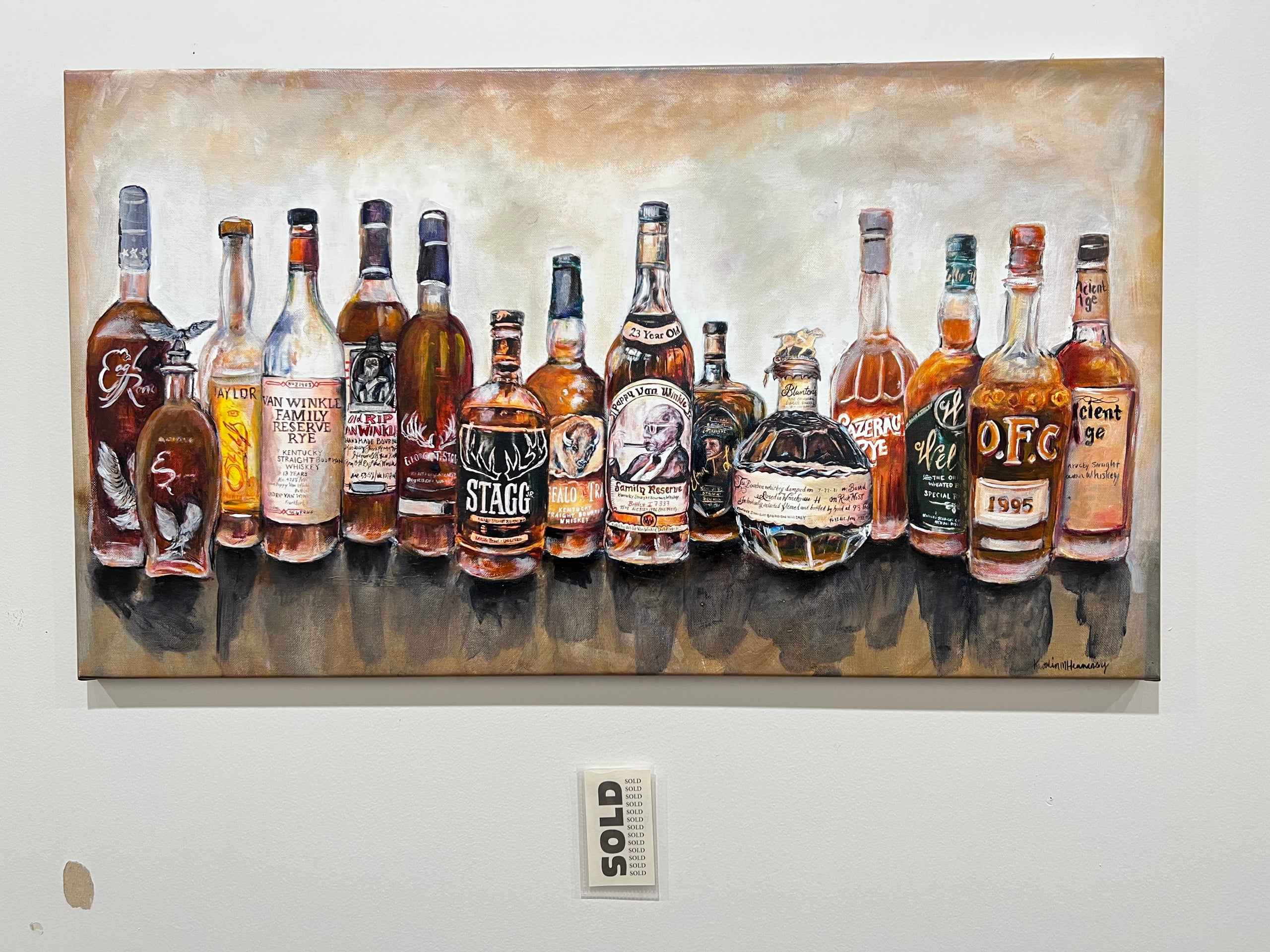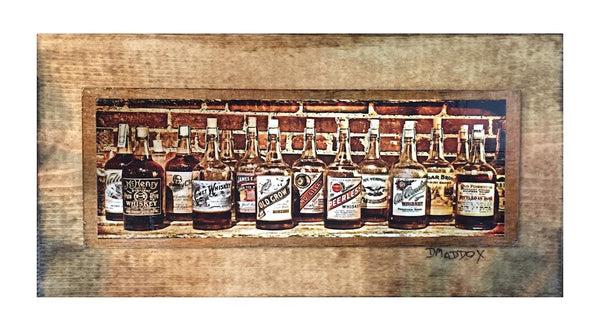Discover the World of Bourbon Art: A Journey Via Society and Craftsmanship
Discover the World of Bourbon Art: A Journey Via Society and Craftsmanship
Blog Article
The Importance of Whiskey Art in Celebrating Heritage and Craftsmanship in the Beverage Industry
The detailed connection in between bourbon art and the event of heritage and workmanship within the beverage market can not be overstated. With attentively created labels and containers, bourbon brands envelop their historical roots and the artisanal abilities that define their production techniques.
The Historic Origins of Whiskey
At the heart of scotch's allure lies a rich tapestry of historic origins that map back to old people. The origins of bourbon can be connected to the purification practices of the Sumerians and Babylonians around 2000 BCE, where early forms of fermented grain drinks began to arise. It was in the Center Ages that the art of distillation evolved dramatically, specifically in Ireland and Scotland, leading to the creation of bourbon as we know it today.
The term "whiskey" itself derives from the Gaelic word "uisce beatha," indicating "water of life." This expression underscores the social significance of bourbon in Celtic societies, where it was commonly related to rituals, events, and public bonding. By the 15th century, distillation became a recognized craft within monastic communities, leading the way for the facility of legal distilleries.
As profession paths increased, bourbon's appeal grew, going beyond local borders and capturing the rate of interest of lovers worldwide. Whiskey Art. This historical journey shows not just the workmanship behind scotch production but also its important duty in cultural and social contexts, marking it as a significant drink throughout history
Artistic Expression in Branding
Whiskey branding stands as an engaging intersection of creativity and business, where aesthetic identification plays a crucial role fit customer understanding. The aesthetic appeals of whiskey labels, packaging, and advertising and marketing products show not just the brand's story but also its core values and heritage. With creative expression, distilleries convey a story that reverberates with consumers, evoking emotions and stimulating links.
Using color, typography, and imagery in branding offers to distinguish items in a saturated market. As an example, typical concepts might stimulate a sense of credibility and workmanship, while contemporary layouts can signify advancement and forward-thinking. This critical creative direction enhances brand name recognition and loyalty, enabling customers to build an individual partnership with the bourbon they choose.
Furthermore, creative expression in branding often acts as an event of regional heritage. Distilleries often include neighborhood signs or historical referrals right into their layouts, developing a sense of place that welcomes consumers to take part in a broader social experience. Ultimately, the virtuosity behind bourbon branding not just enhances visual allure however also enhances the total narrative of the brand, cultivating a much deeper gratitude for the craftsmanship and heritage embedded in each container.
Craftsmanship in Container Layout
The virtuosity evident in whiskey branding extends beyond aesthetic identification to incorporate the craftsmanship included in container style. Each bottle functions as a vessel not simply for the spirit within, however likewise for the story it outlines its beginning, top quality, and custom. The style procedure requires careful focus to detail, as elements such as material, closure, and shape contribute considerably to the total assumption of the bourbon.
Workmanship in bottle layout includes selecting top quality glass that can boost the whiskey's shade and clearness, while also supplying a responsive experience for the customer. The shape of the bottle should be both functional and visually enticing, commonly reflecting the heritage of the brand. Several distilleries go with distinct forms or embossed logo designs that stimulate a sense of authenticity and background.
Additionally, the tag style and typography play a crucial duty in connecting the brand name's narrative. Whiskey Art. A well-crafted bottle not only astounds the customer's eye however additionally strengthens the brand's commitment to quality and practice. By doing this, the workmanship of container design comes to be a vital aspect of the bourbon experience, merging virtuosity with an extensive regard for heritage
Cultural Relevance of Scotch Art
Commemorating practice and craftsmanship, the social value of bourbon art goes beyond mere aesthetic appeals, intertwining with the social and historic narratives of the areas from which it comes from. Each container offers as a canvas, illustrating the unique stories, mythology, and practices that have actually click for source formed neighborhood whiskey-making practices. The detailed styles often reflect the heritage of the distillers, integrating symbols and themes that reverberate with the society and values of their neighborhoods.

Additionally, whiskey art plays an important function in common gatherings and celebrations, functioning as a tangible web link in between people and their shared experiences. By appreciating the creativity in bourbon product packaging, consumers grow a much deeper understanding and regard for the craft, ultimately enriching their pleasure of the beverage itself.
Modern Trends in Scotch Discussion
In recent years, the discussion of scotch has actually progressed to reflect contemporary tastes and trends while still recognizing typical craftsmanship - Bourbon Art. Distilleries are increasingly concentrating on aesthetic elements that boost the overall alcohol consumption experience, connecting the void between heritage and modernity
Cutting-edge bottle layouts have emerged, usually incorporating sustainable materials and artistic labels that tell compelling stories. Many brands now team up with local artists, instilling their items with distinct aesthetic expressions that resonate with customers. Furthermore, limited-edition releases are commonly packaged in collectible containers, including value and allure for connoisseurs.

Conclusion
Finally, scotch art functions as a vital channel for revealing the heritage and craftsmanship intrinsic in the beverage sector. Through complex branding, innovative bottle styles, and culturally significant artistic aspects, whiskey brands effectively recognize their traditions and get in touch with consumers. This imaginative story not only elevates the gratitude of whiskey but additionally strengthens community identification and pride among manufacturers. Eventually, bourbon art plays a crucial role in preserving and celebrating the rich cultural tapestry of whiskey-making.


Workmanship in bottle design includes selecting top quality glass that can enhance the scotch's color and clearness, while additionally giving a tactile experience for the consumer. In this method, the workmanship of container design ends up being a vital aspect of the scotch experience, merging creativity with an extensive regard for heritage.
In final thought, whiskey art offers as a vital channel for expressing the heritage and craftsmanship intrinsic in the drink market.
Report this page